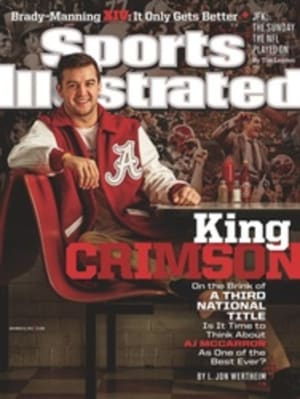
The Case for ... Dario Franchitti
In the long history of race car drivers doubling as camera-hogging, sponsor-spouting ad machines, Dario Franchitti was different. Take that rainy day in May 2007 at Indianapolis Motor Speedway. A few hours after he won his first Indy 500, Franchitti and his movie-star wife sat in a suite above the empty frontstretch grandstands, where they held hands, sipped hot tea and dreamed big dreams. "This is only the beginning of major things to come in your career," Ashley Judd told her husband. "There is so much more out there for you." When Franchitti and Judd walked into the infield, hundreds of fans greeted them in the darkness. More bulbs popped in Judd's face than in her husband's—and Franchitti couldn't have been happier.
That scene explains why, in part, Franchitti is the most underappreciated IndyCar driver in history. Last Thursday, Franchitti, 40, a native of Edinburgh, Scotland, announced he was retiring from racing. In a terrifying wreck on Oct. 6, in the Houston Grand Prix, his Honda Dallara went airborne and flew into the catch fence. It shattered into hundreds of pieces, and he fractured his spine, broke his right ankle and suffered a concussion.
The crash was reminiscent of the October 2011 accident at Las Vegas Motor Speedway that killed Dan Wheldon, one of Franchitti's closest friends, and doctors warned Franchitti that another big hit could cause permanent brain damage. "To be told you can't continue is pretty disheartening, to say the least," says Chip Ganassi, Franchitti's team owner. "It's safe to say that Dario's name is up there with all the greats, like Foyt, Andretti, Unser."
It is. A four-time series champion, Franchitti's 31 career victories are eighth best and his 33 poles are sixth—numbers he likely would have padded in the coming years. (A.J. Foyt won his last race at age 46.) Franchitti failed miserably in a brief foray into NASCAR, but in the sleek open-wheel IndyCar machines Franchitti has displayed freakish hand-eye-foot coordination. He developed these skills in the early 1990s while driving in the British Formula Three series for his racing mentor, Jackie Stewart, a fellow Scot and three-time Formula One champion.
But Franchitti never captivated the imagination of fans the way Sir Jackie did. Reticent and reclusive by nature, Franchitti happily blended into the background while his wife smiled into the spotlight. Rival drivers joked that Judd, sitting atop Franchitti's pit box, received more airtime than her husband during his three victories at the Brickyard. (Only Foyt, Al Unser Sr. and Rick Mears have won the Indy 500 more times.) This wasn't much of an exaggeration. Though they announced earlier this year they are separating, it was clear during their 12 years together that her fame obscured the accomplishments of Mr. Judd, as he was sometimes mockingly called at the track.
This wouldn't have mattered if Franchitti arrived during the sport's glory days of the 1970s and '80s. If a driver won the Indy 500 back then, his name cruised into the national headlines. But since open-wheel racing split into two competing series in 1996, the sport has hemorrhaged fans and relevancy. This year's Indy 500, for instance, earned a 3.7 rating, which was the second-lowest since live telecasts of the event began in '86. So even as Franchitti drove his way into the record books, few mainstream fans seemed to notice.
He deserved more. Those who did watch him closely know this: Mr. Franchitti was one of IndyCar's alltime greats.
More bulbs popped in Judd's face than her husband's, which is why, in part, Franchitti is the most under-appreciated driver in IndyCar history.
PHOTO
JAMIE SQUIRE/GETTY IMAGES

